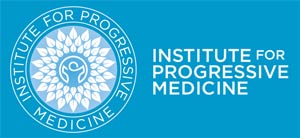
There are 572,000 cancer deaths in the United States each year, one third of which are attributable to diet and physical activity habits, mainly overweight and obesity. Fully another third is a result of exposure to tobacco products.
Overweight and obesity are estimated to cause 14% to 20% of cancer-related deaths. The major cancers related to overweight are breast cancer in post-menopausal women, colon and rectal cancer, endometrial, kidney, esophageal and pancreatic cancer. Several other cancers are likely related to overweight, including liver cancer, non-Hodgkins lymphoma, multiple myeloma, cervical, ovarian and prostate cancer.
A minor reduction in caloric intake, only 50-100 calories a day, may be enough to prevent weight gain, and successful weight loss may occur with caloric reduction of 500 calories a day. Foods that aggravate the problem include fried foods, cookies, cakes, candies, and sugar-sweetened beverages. These foods should be replaced with vegetables, fruits, beans and whole grains. Most restaurants offer meals that exceed recommended serving sizes, are high in hidden fats and sugars, and low in vegetables, fruits, beans and whole grains.
The health of children, and of the teenagers and adults they will become, is closely tied to the establishment of healthy behaviors in childhood. Weight gain, poor diets, and physical inactivity during childhood and adolescence increase the later risk of cancer, cardiovascular disease, stroke, diabetes, hypertension and osteoporosis later in life. Overweight young people tend to remain overweight when they become adults.
Physical activity and cancer:

Children and adolescents should have at least one hour daily of moderate or vigorous physical activity.
Sedentary behavior such as sitting, lying down, and watching television or pursuing other forms of screen-based entertainment should be limited.
Physical activity has a beneficial effect on insulin, prostaglandins, sex hormones, and immune function.
Physical activity reduces the risk of breast, colon, endometrial, prostate and probably pancreatic cancer. Breast cancer risk is 25% lower in women who are more active compared with those who are less active, including both pre- and post-menopausal women.
Moderate physical activities include: walking, dancing, leisurely bicycling, ice and roller skating, horseback riding, canoeing, yoga, downhill skiing, golfing, volleyball, softball, baseball, badminton, doubles tennis, mowing the lawn, gardening, and walking and lifting as part of the job.
Vigorous physical activities include: jogging or running, fast bicycling, circuit weight training, swimming, jumping rope, aerobic dance, martial arts, cross-country skiing, soccer, field or ice hockey, lacrosse, singles tennis, racquetball, basketball, and heavy manual labor (forestry, construction, fire fighting).
300 minutes of moderate to vigorous physical activity each week will further prevent overweight and assist weight loss. Cancer benefits of increased activity likely apply even when initiated later in life.
Alcohol:

Alcohol increases the risk of cancer of the mouth, pharynx, larynx, esophagus, liver, colon and rectum, and female breast, and possibly pancreatic cancer as well. When used along with tobacco, the interaction with alcohol results in more than an additive effect on cancer. More than 3 drinks a day leads to a 1.4-fold higher risk of colorectal cancer. Compared with non-drinkers, women who have one drink a day have a 10%-12% higher risk of breast cancer.
Total alcohol consumption, not the type of alcohol, is the deciding risk factor. Alcohol constitutes the fifth largest contributor to caloric intake in adults, thus adding to the cancer risk from overweight.
Coffee: There is no evidence that drinking coffee increases cancer risk.
Sugar: Sugar increases caloric intake without providing any nutrients that reduce cancer risk. By promoting obesity, high sugar intake indirectly increases cancer risk.
Soy: Soy products are an excellent source of protein, and may be used to replace meat. Soy contains phytochemicals, including isoflavones, which may protect against hormone-dependent cancers. Studies suggest that eating soy foods such as tofu may protect against cancer of the breast, prostate and endometrium.
Meat: Frying , broiling or grilling meat at high temperatures creates chemicals that increase cancer risk, including heterocyclic aromatic amines and polycyclic aromatic hydrocarbons. The effect may be due to causing DNA damage. Heavier meat consumption leads to increased colorectal cancer. Meats can be more safely prepared by braising, steaming, poaching, and stewing.

Juicing may be a preferable way of consuming vegetables and fruits, especially for those who have difficulty chewing or swallowing. Nutrients in juices may also be more easily absorbed. However, juicing removes fiber, and may add excessive calories if large quantities are consumed.
Allan Sosin
